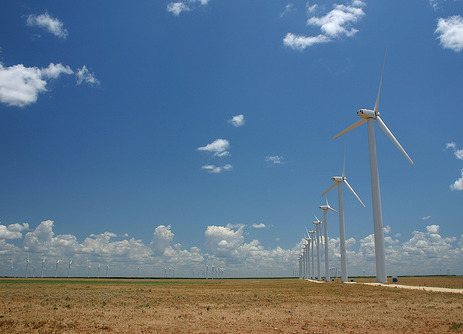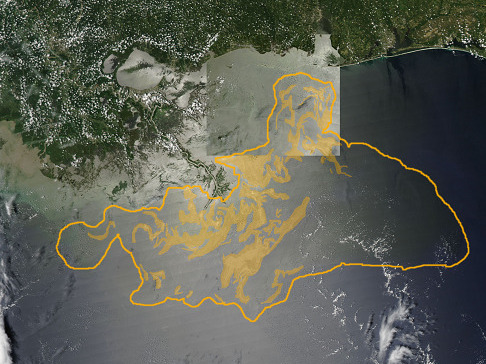Cross-posted from the Wonk Room.
In a contrarian take, Time Magazine‘s Michael Grunwald wrote a preemptive post-mortem impact of BP’s Deepwater Horizon disaster, saying that it “does not seem to be inflicting severe environmental damage.” Grunwald believes that Rush Limbaugh “has a point” because the right-wing radio host spent weeks dismissing the disaster. New York Times reporters Justin Gillis and Campbell Robertson wrote that the “oil slick in the Gulf of Mexico appears to be dissolving far more rapidly than anyone expected.” The Associated Press’s John Carey believes “the oil slicks that once spread across thousands of miles of the Gulf of Mexico have largely disappeared.” The narrative of the disappearing disaster has been promoted by Politico’s Mike Allen and the Drudge Report.
Meanwhile, the oil blowout has been contained but not killed, oil continues to wash ashore, and the haphazard scientific effort to understand the 100-day disaster is hobbled by BP’s interference and governmental lassitude. It’s fair to point out, as Grunwald does, that the oil disaster’s impact on Louisiana’s shoreline is likely to be meaningless if the marshlands continue to disappear. Fringe rumors of global eco-collapse — never promoted by major environmental groups — continue to be as baseless as the nonsense spouted by conservative activists, media, and politicians on behalf of the oil industry.
However, the only honest take on the BP disaster right now is that this is a calamity, the true scope of which will take years to discover, with many impacts impossible to ever know. No one knows how badly this disaster will affect the dying marshlands of Louisiana. No one knows how badly the toxic oil plumes will affect the spawning grounds of the bluefin tuna, the feeding grounds of the threatened Gulf sturgeon, or the future of the endangered Kemp’s ridley sea turtles, whose corpses have been found at 15 times the historical rate this summer. No one knows what the long-term physical and mental health impacts will be on the tens of thousands of cleanup workers.
Moreover, it is undoubtedly premature to announce that the vast oil slick has largely disappeared from the ocean’s surface. Thick oil, vast slicks, and tar balls continue to wash ashore along Louisiana’s coastline. Satellite imagery from July 27 and 28 — as the stories of disappearing oil were being filed — show a vast region still discolored by slicks and sheen, little diminished from previous weeks:
 Composite of MODIS visible satellite imagery from July 27 and July 28. Analysis of spill extent by Brad Johnson.
Composite of MODIS visible satellite imagery from July 27 and July 28. Analysis of spill extent by Brad Johnson.
UPDATE: At the Huffington Post, Dan Froomkin reports:
Scientists have found signs of an oil-and-dispersant mix under the shells of tiny blue crab larvae in the Gulf of Mexico, the first clear indication that the unprecedented use of dispersants in the BP oil spill has broken up the oil into toxic droplets so tiny that they can easily enter the foodchain.
And at the Gulf Restoration Network, Matthew Preusch reports that scientists like George Crozier, executive director of the University of South Alabama’s Dauphin Island Sea Lab, are deeply concerned about the undersea dispersed oil:
“A lot of our eggs and larvae are in the top 100 meters, so as this cloud of toxins spreads upward, we’re making an assumption that its killing all of them,” he said. “I absolutely hate the use of dispersants at depth. I think that was the most huge of mistake in the process of containment.”
Last week, a group of prominent marine researchers released a statement calling for the end of the use of dispersants in the Gulf, saying, “Corexit dispersants, in combination with crude oil, pose grave health risks to marine life and human health.”



